 Dave Hall is one of the founders of Toxic Games, the studio that created the compelling first-person 3D platform puzzler Q.U.B.E. As part of our series of puzzle designer interviews, we asked Hall about the methods he used to design Q.U.B.E.’s puzzles.
Dave Hall is one of the founders of Toxic Games, the studio that created the compelling first-person 3D platform puzzler Q.U.B.E. As part of our series of puzzle designer interviews, we asked Hall about the methods he used to design Q.U.B.E.’s puzzles.
In Q.U.B.E. (Quick Understanding of Block Extrusion), players find themselves trapped in a mysterious facility where the walls are made from countless white cubes. Through a weird device attached to the players’ arm, some coloured cubes can be extruded, and with a bit of thought, the player can arrange these to form a route to escape each level. The game was inspired by the student film The Room.
Q.U.B.E. was a nominated for the Best UDK Singleplayer indie of 2010, and it was a finalist in the non-professional category of the Indie Game Challenge.
Dave Hall answers our questions below.
Dev.Mag: What are the qualities of good puzzle design?
In a good puzzle the objective is always clear and it is easy for the player to understand the rules that the puzzle is based around. It should also be easy for the player to get started.
Dev.Mag: What Process do you follow to design puzzles?
I always start with the objective for the puzzle. For example; ‘how can I reach that platform?’ From there I think of the different ways that the player could reach that objective. In the early stages of development I would create a plan for each level on paper before creating anything in-engine.
However, it can be difficult to plan out every aspect of a puzzle because it doesn’t always work the same way in-engine. Now the first thing I do is create a prototype, then I test it and iterate on it until it works.
 |
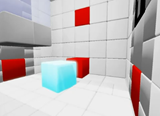 |
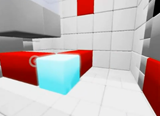 |
 |
 |
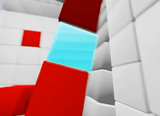 |
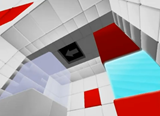 |
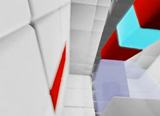 |
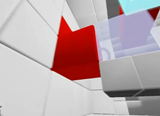 |
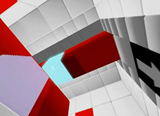 |
 |
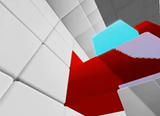 |
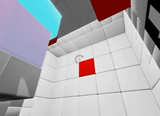 |
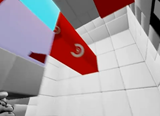 |
 |
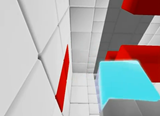 |
Solving a prototype puzzle.
Dev.Mag: How do you design a series of puzzles based on a small set of mechanics that keep the players interest?
When we introduce a new mechanic, we introduce it on its own so that the player can learn how different objects behave without having everything explained to them. Every puzzle in the game is based around the same set of rules. As the player progresses through the game they gain a better understanding of these rules, which allows them to complete more complex puzzles.
Dev.Mag: How do you judge whether a puzzle is fun, and how difficult it is to solve?
 This is where playtesting is important. If a player gets stuck on a puzzle, then they may become frustrated and quit. Sometimes players will not realise something that I thought was quite obvious.
This is where playtesting is important. If a player gets stuck on a puzzle, then they may become frustrated and quit. Sometimes players will not realise something that I thought was quite obvious.
In other cases a puzzle will be designed to be completed a certain way, but some players will find another way to complete it. If you watch someone playing your game or ask them about it after they finish playing, you can find out what they enjoyed and if they were ever stuck, as well as other important information.
Dev.Mag: What devices do you use to guide the player towards the solution?
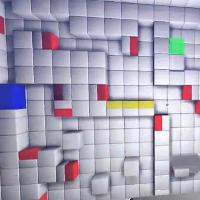 The objective should always be clear and the player should understand how each object functions. I always try to make it easy for the player to see everything they need to complete a puzzle. It is also good if the player knows when they are getting close to completing the puzzle.
The objective should always be clear and the player should understand how each object functions. I always try to make it easy for the player to see everything they need to complete a puzzle. It is also good if the player knows when they are getting close to completing the puzzle.
Many of the puzzles in Q.U.B.E. are in stages. They start out simple so the player understands what they have to do. As they progress, each stage gets more complex, but is still based around the same rule-set.
Dev.Mag: Do you have any advice for those who want to design their own puzzles?
When thinking of new ideas for puzzle, always start simple and then build out from there. Make sure the objective is clear and the player understands the rules. It is also important to start testing as soon as possible. You may think you have a good idea , but you don’t really know until someone else plays it.
Pingback: Dave Hall (from Q.U.B.E.) talks about designing puzzles « games design newport
Pingback: Indie Game Links: Here Kitty Kittey | Digital Combat Soldiers